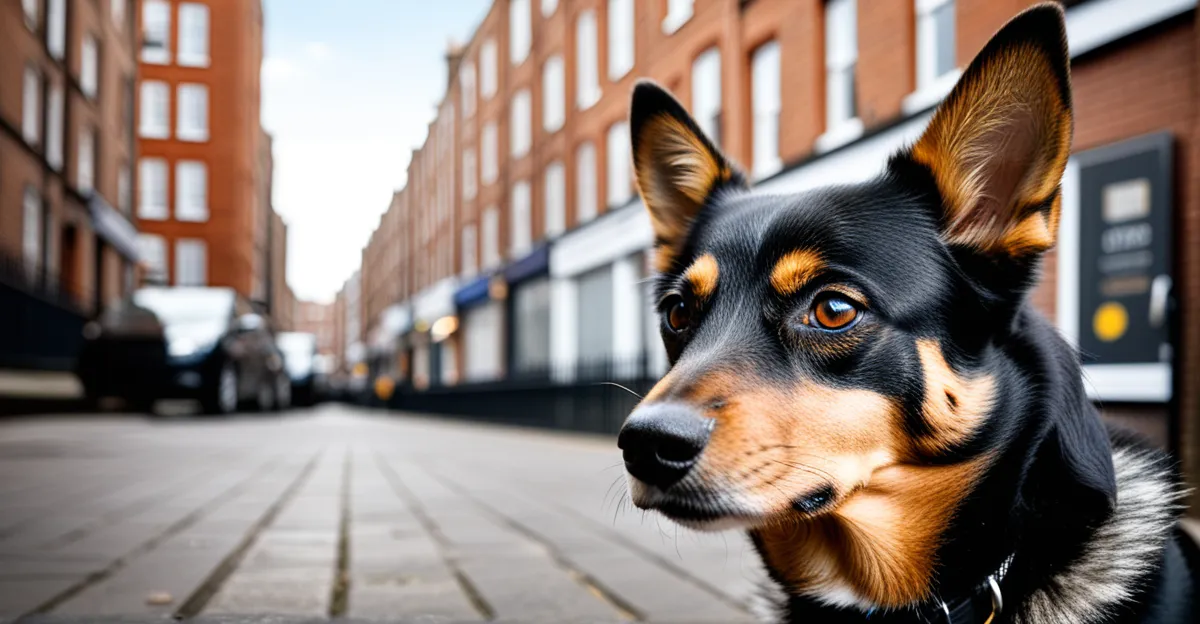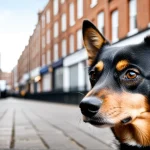Understanding Urban Hazards for Pets
Navigating the complexities of urban environments as a pet owner involves recognizing potential hazards that are commonly encountered. Urban pet safety is a crucial consideration, with hazards in urban environments ranging broadly, demanding attention and proactive management.
Common Urban Hazards
In bustling cities, pets face unique dangers, notably from traffic and noise pollution. High traffic levels can be distressing for pets, exposing them to risks that require constant vigilance. Noise, another urban pet owner concern, can lead to anxiety and stress, making it essential for owners to find strategies to mitigate these pressures.
In parallel : How can you find the best pet insurance in the UK?
Crowded Areas and Public Spaces
Risks associated with public spaces are often underestimated. In crowded urban settings, pets are susceptible to accidents or injuries from unfamiliar individuals or other animals. It becomes crucial to maintain control and maintain awareness of surroundings to ensure both pet and public safety.
Interactions with Urban Wildlife
Furthermore, wildlife interactions can introduce unexpected dangers. Urban environments attract a variety of wildlife, which can pose threats to domestic pets. Understanding these encounters and taking preemptive steps to mitigate potential conflicts is a fundamental aspect of responsible urban pet ownership. In this way, pet owners can enhance their pets’ safety through informed and attentive care.
Topic to read : How Can UK Pet Owners Enhance Their Pets’ Well-being Through Nutrition?
Effective Strategies for Traffic Safety
Ensuring traffic safety for pets in bustling urban areas requires careful planning and consistent actions. Establishing safe walking practices can significantly mitigate the dangers associated with busy roads.
Best Practices for Walking Pets
When walking near heavy traffic, using leashes is paramount. They keep pets within reach and prevent sudden dashes onto the street. Incorporating visibility gear, such as reflective vests, can enhance your pet’s visibility to drivers, especially during low light conditions.
Importance of Commands
Training your pet in basic commands like “stay” or “heel” is essential. These commands provide you immediate control, aiding in critical moments when vehicles approach unexpectedly. Regular training sessions not only improve response but also increase overall safety awareness.
Enhancing Urban Traffic Awareness
Developing urban traffic awareness isn’t just about the pet’s safety; it’s also about your vigilance as an owner. Routes with less congestion and ample sidewalks are preferable. Being aware of pedestrian signals and traffic patterns reinforces safety for both you and your pet.
By implementing these strategies, you foster a safer environment during urban outings, enhancing the well-being of your pet in traffic-heavy scenarios.
Safe Exploration of Urban Parks and Public Spaces
Exploring urban parks for pets offers a valuable opportunity for exercise and socialization, but ensuring these are safe public spaces is vital. Selecting parks with pet-friendly features such as designated off-leash areas and secure fencing helps mitigate risks. Additionally, some parks provide water stations and waste disposal facilities, enhancing the overall experience for both pets and owners.
Guidelines for Socializing Pets
Socializing your pet in public areas requires vigilance and adherence to guidelines. Familiarizing your pet with different situations gradually can build their confidence and improve their behavior around others. Regular visits to pet-friendly areas in cities, where they can interact with various animals and people, facilitate positive social habits. Ensuring pets are vaccinated and healthy is crucial before introducing them to new environments.
Monitoring Behavior Around Unfamiliar Animals
Closely monitoring your pet’s behavior around unfamiliar animals is fundamental for safety. Even the most socialized pets can react unpredictably in new settings. Look for signs of stress or aggression such as raised fur or excessive barking, and be prepared to intervene if necessary. Always keep a safe distance from others until positive interactions are confirmed.
Legal Considerations for Pet Owners in Urban Areas
Owning a pet in urban settings involves adhering to strict legal responsibilities. In the UK, pet ownership regulations encompass policies that dictate public behavior and ensure animal welfare. Whether it’s about licensing, control orders, or waste disposal, understanding these laws protects both the pet and the owner from legal complications.
Overview of UK Pet Laws
UK pet laws are structured to preserve public safety and animal rights. For instance, the Dangerous Dogs Act mandates keeping certain breeds under control and microchipped. Similarly, the Anti-Social Behaviour, Crime and Policing Act may require owners to take specific precautions in decision-making, considering the broader community safety. Regularly updating oneself with these regulations facilitates an informed approach to urban pet ownership.
Liability and Owner Responsibilities
Being a pet owner in public spaces carries substantial responsibilities. Owners are liable for their pet’s actions; incidents causing property damage, or harm to individuals or other animals, could result in legal consequences. Thus, exercising caution and ensuring compliance with local laws is crucial. Understanding these obligations minimizes risks associated with urban environments and supports harmonious cohabitation.
Consequences of Neglecting Regulations
Disregarding pet regulations can lead to serious repercussions, including fines or, in severe cases, seizure of the pet. Ignorance of microchipping laws, vaccination requirements, or public control orders could usher in legal troubles. Staying aware and proactive not only prevents such outcomes but also champions a responsible urban pet environment, fostering wellbeing for all involved.
Tips for Handling Emergencies in Urban Settings
Navigating urban environments with a pet can present unexpected challenges. Understanding pet emergency preparedness is vital for ensuring both safety and security.
Creating an Emergency Plan
Formulating a comprehensive emergency plan specifically for urban settings is crucial. It involves detailing steps on what to do in various crisis situations, such as accidental injuries or lost pets. Having a contingency plan in place allows pet owners to react swiftly and calmly during emergencies.
Essential Items for Outings
When venturing out with pets, carrying certain essential items can greatly aid in managing unforeseen events. These include a basic first aid kit tailored for pets, contact details of nearby veterinary clinics, and a portable water bowl to prevent dehydration.
Locating Veterinary Services
Being aware of nearby veterinary services is a fundamental component of emergency preparedness. Familiarize yourself with the nearest animal clinics and 24-hour emergency services available in your area. This knowledge ensures quick access to professional care when your pet’s health is at risk.
By equipping yourself with a detailed emergency plan, essential items, and awareness of veterinary resources, you strengthen your ability to handle urban pet emergencies effectively.
Utilizing Safety Products and Resources
Navigating urban life with pets demands attention to a myriad of safety measures. A variety of pet safety products and urban pet resources can significantly enhance the safety of our four-legged friends. Employing safety equipment for pets enables you to create a more secure environment for your pet’s urban adventures.
Recommended Safety Gear
In busy areas, high-visibility devices can be lifesavers. Reflective vests and LED collars increase your pet’s visibility during night walks. Harnesses offer greater control, preventing pets from slipping away unexpectedly. Consider collapsible water bowls and portable waste bags for convenience on longer outings.
Online Resources for Local Pet Services
The internet is a treasure trove of information for finding local pet services. Websites can guide you to nearby veterinarians, pet-friendly cafes, or even training sessions dedicated to urban pet safety. These urban pet resources connect you with essential services, enhancing your pet-care regime.
Importance of Microchipping
A critical aspect of urban pet safety is ensuring you have reliable identification. Microchipping your pet is a permanent way to ensure they don’t get lost in the urban sprawl. When paired with a secure collar and ID tag, this identification method is invaluable for swift reunions in case of separation. Prioritize pet identification as a cornerstone of your safety strategy.







